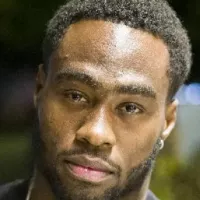Advanced Micro Devices (AMD) is a multinational technology corporation that develops CPUs, GPUs, FPGAs, SoCs, and high-performance computing components. Headquartered in Santa Clara, California, AMD operates in consumer and business markets, including gaming, data centers, AI, and embedded systems. AMD is a major player in the semiconductor industry, competing with companies like Intel and NVIDIA, and its products are used in a wide variety of devices, from personal computers to servers and embedded systems.
1959: First silicon integrated circuit
In 1959, Robert Noyce developed the first silicon integrated circuit at Fairchild.
July 1968: Intel Founded
In July 1968, Robert Noyce and Gordon Moore, former Fairchild executives, founded Intel, a key event preceding Jerry Sanders' decision to start AMD.
May 1, 1969: AMD formally incorporated
On May 1, 1969, Advanced Micro Devices was formally incorporated by Jerry Sanders and seven colleagues from Fairchild Semiconductor, driven by dissatisfaction with the lack of support and flexibility at Fairchild.
September 1969: Move to Sunnyvale Headquarters
In September 1969, AMD relocated to its new headquarters in Sunnyvale, California, housing the company's entire operations, including wafer production.
November 1969: First Product Manufactured
In November 1969, AMD manufactured its first product, the Am9300, a 4-bit MSI shift register.
1969: AMD Founded
In 1969, AMD was founded by Jerry Sanders and a group of technology professionals, initially focusing on memory chips and other computer components.
1970: First Proprietary Product
In 1970, AMD produced its first proprietary product, the Am2501 logic counter, which was highly successful.
1971: Entry into RAM chip market
In 1971, AMD entered the RAM chip market with the Am3101, a 64-bit bipolar RAM. Sales of linear integrated circuits also increased significantly, and total annual sales reached US$4.6 million.
1971: Am2505 Launch
In 1971, AMD's best-selling product was the Am2505, the fastest multiplier available.
1971: Intel Introduces First Microprocessor
In 1971, Intel created the first microprocessor, the 4-bit 4004.
September 1972: AMD Goes Public
In September 1972, AMD went public.
1973: Second Source for Intel MOS/LSI Circuits
By 1973, AMD was a second source for Intel MOS/LSI circuits, including the Am14/1506 and Am14/1507 dual 100-bit dynamic shift registers.
1975: Product Expansion
By 1975, AMD was producing 212 products, including proprietary products like the Am9102 RAM and low-power Schottky MSI circuits: Am25LS07, Am25LS08, and Am25LS09.
1975: Entry into Microprocessor Market
In 1975, AMD entered the microprocessor market with the Am9080, a reverse-engineered clone of the Intel 8080, and the Am2900 bit-slice microprocessor family.
October 1976: Cross-Licensing Agreement with Intel
In October 1976, AMD entered into a cross-licensing agreement with Intel, granting AMD a copyright license to the microcode in its microprocessors and peripherals.
1976: AMD–Intel cross-licensing agreement
In 1976, AMD and Intel signed a cross-licensing agreement.
1977: Joint Venture with Siemens
In 1977, AMD entered into a joint venture with Siemens, with Siemens purchasing 20% of AMD's stock and jointly establishing Advanced Micro Computers (AMC).
1978: Intel introduces the x86 microprocessors
In 1978, Intel introduced the first x86 microprocessors.
1978: Sales Top $100 Million
In fiscal year 1978, AMD's total sales topped $100 million.
1979: AMD Buys Siemens' Stake in AMC
In 1979, AMD bought out Siemens' stake in the American division of Advanced Micro Computers due to diverging visions for the company.
1979: New York Stock Exchange Debut & Austin Plant
In 1979, AMD debuted on the New York Stock Exchange and began production at its new semiconductor fabrication plant in Austin, Texas.
1980: Entry into Telecommunications
In 1980, AMD began supplying semiconductor products for telecommunications.
October 1981: Technology Exchange Agreement with Intel Signed
In October 1981, Intel and AMD signed a 10-year technology exchange agreement.
1981: San Antonio Fabrication Plant
In 1981, AMD began construction on a fabrication plant in San Antonio.
1981: Closure of Advanced Micro Computers
In late 1981, AMD closed Advanced Micro Computers after switching focus to manufacturing second-source Intel x86 microprocessors.
February 1982: AMD becomes second-source manufacturer of Intel processors
In February 1982, AMD signed a contract with Intel, becoming a licensed second-source manufacturer of 8086 and 8088 processors due to IBM's policy requiring at least two sources for its chips.
February 1982: Technology Exchange Agreement Formally Executed
In February 1982, the technology exchange agreement between Intel and AMD was formally executed, allowing each company to become a second-source manufacturer for the other's semiconductor products.
1982: Second-Source Production Begins
Beginning in 1982, AMD began volume-producing second-source Intel-licensed 8086, 8088, 80186, and 80188 processors.
1984: Am286 Clone Production
By 1984, AMD was producing its own Am286 clone of Intel's 80286 processor for the IBM PC market.
1984: 512K EPROM and "100 Best Companies"
In 1984, AMD created the world's first 512K EPROM and was listed in the book "The 100 Best Companies to Work for in America."
1984: Intel decides to end cooperation with AMD
In 1984, Intel internally decided to no longer cooperate with AMD in supplying product information in order to shore up its advantage in the marketplace. Intel delayed and eventually refused to convey the technical details of the Intel 80386.
1985: Microchip Market Downturn
By mid-1985, the microchip market experienced a severe downturn due to Japanese trade practices and a crowded U.S. market.
1985: Fortune 500 Listing
In 1985, AMD made the Fortune 500 list for the first time.
1985: Intel releases its own x386
In the face of uncertainty during the legal dispute, AMD was forced to develop clean room designed versions of Intel code for its x386 and x486 processors, the former long after Intel had released its own x386 in 1985.
1986: Embracing RISC
Beginning in 1986, AMD embraced RISC with their own AMD Am29000 (29k) processor.
1986: Liberty Chip Program
In fiscal year 1986, AMD responded to the mid-1980s crisis with the Liberty Chip program, aiming to design and manufacture one new chip or chipset per week for 52 weeks, and lobbying the U.S. government against predatory Japanese pricing.
1987: AMD invokes arbitration over Intel cooperation
In 1987, AMD invoked arbitration over Intel's refusal to supply product information, leading Intel to cancel the 1982 technological-exchange agreement.
1990: Intel countersues AMD
In 1990, Intel countersued AMD, renegotiating AMD's right to use derivatives of Intel's microcode for its cloned processors, forcing AMD to develop clean room designed versions of Intel code for its x386 and x486 processors.
March 1991: AMD Releases Am386 Processor
In March 1991, AMD released the Am386, its clone of the Intel 386 processor, and sold one million units by October of the same year.
1991: Introduction of Am386
In 1991, AMD introduced its 386-compatible Am386, an AMD-designed chip, competing directly with Intel.
1992: AMD wins arbitration against Intel
In 1992, after three years of testimony, AMD won in arbitration against Intel, but Intel disputed this decision.
1993: AMD introduces Am486 family of processors
In 1993, AMD introduced the first of the Am486 family of processors, proving popular with original equipment manufacturers, including Compaq, which signed an exclusive agreement.
1993: Flash Memory Co-Manufacturing with Fujitsu
Since 1993, AMD had been co-manufacturing flash memory with Fujitsu.
1994: Supreme Court of California sides with AMD
In 1994, after a long legal dispute, the Supreme Court of California sided with the arbitrator and AMD in its case against Intel.
November 1995: AMD releases Am5x86 processor
In November 1995, AMD released the Am5x86, another Am486-based processor, continuing AMD's success as a fast, cost-effective processor.
1995: AMD–Intel cross-licensing agreement expiration
The cross-licensing agreement between AMD and Intel, signed in 1976, was extended through 1995 due to the 1982 agreement.
January 1996: Acquisition of NexGen
In January 1996, AMD acquired NexGen for $857 million to develop what eventually became AMD K6.
1996: AMD purchases NexGen
In 1996, AMD purchased NexGen for the rights to their Nx series of x86-compatible processors.
1996: AMD receives rights to microcode in Intel processor families
In 1996, AMD received the rights to the microcode in Intel's x386 and x486 processor families, but not the rights to the microcode in the following generations of processors.
1996: AMD launches K5 processor
In 1996, AMD's first in-house x86 processor, the K5, was launched. The name "Kryptonite" was a reference to Intel's market dominance.
1997: AMD Introduces the K6 Processor
In 1997, AMD introduced the K6 processor, based on the reworked NexGen Nx686 design. Some variants of the K6 were faster than Intel's Pentium II.
June 23, 1999: AMD Launches Athlon Processor
On June 23, 1999, AMD launched its seventh-generation x86 processor, the K7, under the brand name Athlon, using a Slot A connector.
October 9, 2001: Release of the Athlon XP
On October 9, 2001, AMD released the Athlon XP processor.
2002: Began sponsorship of Formula 1 racing
In 2002, AMD began its sponsorship of Formula 1 racing. This marked AMD's initial foray into motorsports sponsorship.
February 10, 2003: Release of Athlon XP with 512 KB L2 Cache
On February 10, 2003, AMD released the Athlon XP processor with 512 KB L2 Cache.
April 22, 2003: AMD launches Opteron server processor
On April 22, 2003, AMD launched the Opteron server-oriented processor, featuring 64-bit extension to the x86 instruction set, an on-chip memory controller, and HyperTransport technology.
2003: Spansion Joint Venture
In 2003, AMD spun off its flash memory business and manufacturing into Spansion, a joint venture with Fujitsu.
April 21, 2005: AMD releases first dual-core Opteron
On April 21, 2005, AMD released the first dual-core Opteron, an x86-based server CPU.
December 2005: Divestment of Spansion
In December 2005, AMD divested itself of Spansion to focus on the microprocessor market.
July 24, 2006: Acquisition of ATI Technologies Announced
On July 24, 2006, AMD announced its acquisition of the Canadian 3D graphics card company ATI Technologies for approximately $5.4 billion.
October 25, 2006: Acquisition of ATI Technologies Completed
On October 25, 2006, the acquisition of ATI Technologies by AMD was completed.
2006: AMD announces Fusion initiative after acquiring ATI Technologies
Following AMD's 2006 acquisition of Canadian graphics company ATI Technologies, the Fusion initiative was announced to integrate a CPU and GPU together, later renamed AMD APU (Accelerated Processing Unit).
May 2007: AMD drops "64" from Athlon X2 branding
In May 2007, AMD abandoned the string "64" in its dual-core desktop product branding, becoming Athlon X2, downplaying the significance of 64-bit computing in its processors.
September 2007: AMD releases first server Opteron K10 processors
In September 2007, AMD released the first server Opteron K10 processors, followed in November by the Phenom processor for desktop.
July 2008: Hector Ruiz Steps Down as CEO
In July 2008, AMD's CEO Hector Ruiz stepped down in preparation for becoming chairman of GlobalFoundries.
October 2008: Announcement of GlobalFoundries Spin-Off
In October 2008, AMD announced plans to spin off manufacturing operations into GlobalFoundries Inc.
2008: AMD releases dual-core Sempron processors in China
In 2008, AMD started releasing dual-core Sempron processors exclusively in China, branded as the Sempron 2000 series, with lower HyperTransport speed and smaller L2 cache.
January 2009: AMD releases Phenom II processor line
In January 2009, AMD released a new processor line dubbed Phenom II, a refresh of the original Phenom built using the 45 nm process. AMD's new platform, codenamed "Dragon", used the new Phenom II processor, and an ATI R770 GPU from the R700 GPU family, and a 790 GX/FX chipset from the AMD 700 chipset series. The Phenom II cost less but was not performance-competitive with Intel's mid-to-high-range Core 2 Quads.
March 2009: Hector Ruiz Becomes Chairman of GlobalFoundries
In March 2009, Hector Ruiz became chairman of GlobalFoundries.
2009: GlobalFoundries spin-off
In 2009, GlobalFoundries was spun off from AMD, leading AMD to outsource its manufacturing.
April 2010: AMD releases Phenom II Hexa-core "Thuban" processor
In April 2010, AMD released the new Phenom II Hexa-core (6-core) processor codenamed "Thuban".
August 30, 2010: Retirement of ATI Brand
On August 30, 2010, AMD announced that it would retire the ATI brand name for its graphics chipsets in favor of the AMD brand name.
2010: Release of Magny Cours and Lisbon server parts
In 2010, AMD released the Magny Cours and Lisbon server parts. The Magny Cours part came in 8 to 12 cores and the Lisbon part in 4 and 6 core parts.
August 2011: Rory Read Appointed CEO
In August 2011, AMD announced that former Lenovo executive Rory Read would be joining the company as CEO, replacing Meyer.
November 2011: Layoff Announcement
In November 2011, AMD announced plans to lay off more than 10% (1,400) of its employees from across all divisions worldwide.
October 2012: Additional Layoffs Announced
In October 2012, AMD announced plans to lay off an additional 15% of its workforce to reduce costs due to declining sales revenue.
2012: Acquisition of SeaMicro
In early 2012, AMD acquired the low-power server manufacturer SeaMicro, with plans to develop an Arm64 server chip.
July 1, 2014: AMD reorganized into two business groups
Effective July 1, 2014, AMD reorganized into two business groups: Computing and Graphics, which includes desktop and notebook processors and chipsets, discrete GPUs, and professional graphics; and Enterprise, Embedded, and Semi-Custom, which includes server and embedded processors, dense servers, semi-custom SoC products, engineering services, and royalties.
October 8, 2014: Lisa Su Appointed CEO
On October 8, 2014, AMD announced that Rory Read had stepped down and was succeeded by Lisa Su, who had been chief operating officer since June.
October 16, 2014: AMD Announces Restructuring Plan
On October 16, 2014, AMD announced a new restructuring plan along with its Q3 results, which included the reorganization into two business groups: Computing and Graphics, and Enterprise, Embedded, and Semi-Custom. The restructuring also involved laying off 7% of its global workforce by the end of 2014.
August 2016: AMD moves headquarters to Santa Clara
In August 2016, AMD signed a lease for a new headquarters building in Santa Clara, closing its 47 years in Sunnyvale. Around the same time, AMD also agreed to sell 1 AMD Place to the Irvine Company.
April 2018: Sponsorship with Scuderia Ferrari
On April 18, 2018, AMD started a multi-year sponsorship with the Scuderia Ferrari Formula 1 team, enhancing AMD's presence in motorsports.
2018: Shifting CPU and GPU production to TSMC
In 2018, AMD began to shift the production of their CPUs and GPUs to TSMC after GlobalFoundries announced they would halt development of their 7 nm process. This marked a significant change in AMD's manufacturing strategy.
April 2019: Irvine Company secures approval to redevelop 1 AMD Place
In April 2019, the Irvine Company received approval from the Sunnyvale City Council to demolish 1 AMD Place and redevelop the 32-acre site into townhomes and apartments.
2019: Revised wafer purchase agreement with GlobalFoundries
In 2019, AMD revised its wafer purchase agreement with GlobalFoundries, allowing AMD the flexibility to use other foundries for 7 nm nodes and below. The agreement maintained purchase commitments for 12 nm and above through 2021.
February 2020: Sponsorship with Mercedes-AMG Petronas team
In February 2020, AMD became a sponsor of the Mercedes Formula 1 team, adding to its portfolio of Formula 1 sponsorships just prior to the start of the 2020 race season.
October 2020: AMD to acquire Xilinx
In October 2020, AMD announced its plan to acquire Xilinx, a market leader in field programmable gate arrays and complex programmable logic devices (FPGAs and CPLDs), in an all-stock transaction.
2021: Wafer purchase agreement with GlobalFoundries
In 2021, the wafer purchase agreement between AMD and GlobalFoundries for 12 nm and above came to an end, as part of the revised agreement made in 2019.
February 2022: AMD completes acquisition of Xilinx
In February 2022, AMD completed its acquisition of Xilinx, with an estimated acquisition price of $50 billion.
2022: Xilinx acquisition
In 2022, AMD acquired Xilinx, and began offering field-programmable gate array (FPGA) products.
2022: Sponsorship deal with Victory Five (V5)
In 2022, AMD began a sponsorship deal with Victory Five (V5) for the League of Legends Pro League (LPL), further expanding its involvement in esports.
2022: AMD Surpasses Intel in Market Capitalization
In 2022, AMD surpassed Intel in market capitalization for the first time.
October 2023: AMD Acquires Nod.ai
In October 2023, AMD acquired Nod.ai, an open-source AI software provider, to enhance its AI software ecosystem.
January 2024: AMD discontinues CPLD production
In January 2024, AMD announced that it was discontinuing the production of all complex programmable logic devices (CPLDs) acquired through Xilinx.
February 2024: Diamond sponsor for the World Artificial Intelligence Cannes Festival
In February 2024, AMD was a Diamond sponsor for the World Artificial Intelligence Cannes Festival (WAICF), showing their support for advancements in AI.
March 2024: AMD's valuation exceeds $300B
In March 2024, a rally in semiconductor stocks pushed AMD's valuation above $300B for the first time.
June 2024: Platinum sponsor for HPE Discover 2024
In June 2024, AMD was a Platinum sponsor for the HPE Discover 2024 event, hosted by Hewlett Packard Enterprise in Las Vegas from June 17 to 20 to showcase technology for government and business customers.
August 2024: AMD to acquire ZT Systems
In August 2024, AMD signed a deal to acquire ZT Systems for $4.9 billion. ZT Systems creates custom computing infrastructure used for AI tasks.
2024: AMD gains in server CPU market
Since early 2024, AMD has made significant gains in the server CPU market, reducing the gap with Intel.
June 2025: AMD Unveils AI Server
In June 2025, AMD unveiled the AI server for 2026, the MI400 series of chips, which will be the basis of a new server called "Helios".
July 2025: Intel holds lead in server CPU market
As of July 2025, Intel holds 63.3% of the server CPU market, while AMD has reached 36.5%, showing a strong upward trend for AMD despite Intel's continuing lead.
October 2025: AMD Agrees Deal with OpenAI
In October 2025, AMD announced it had agreed a deal with OpenAI to sell six gigawatts of its AI processors over the next five years. As part of the deal, OpenAI has the option to acquire a 10 per cent stake in AMD: 160 million shares at a token price of $0.01 per share contingent on meeting undisclosed performance targets, the final tranche of options requiring AMD common stock to reach $600 per share.
2026: Planned Launch of AMD "Helios" server
In June 2025, AMD unveiled the AI server for 2026, the MI400 series of chips, which will be the basis of a new server called "Helios".
Mentioned in this timeline

Nvidia is a technology company based in Santa Clara California...
The United States of America is a federal republic located...
California is a U S state on the Pacific Coast...
China officially the People's Republic of China PRC is an...
Japan is an East Asian island country situated in the...

Intel Corporation headquartered in Santa Clara California is a multinational...
Trending

28 days ago Brandin Cooks joins Bills; WR Moore released after guaranteed $2.5 million contract.

7 months ago Mikaela Shiffrin Releases Final Episode of "Moving Right Along" Web Series

2 months ago Keon Coleman's performance impacts Bills-Chiefs game, influencing Brandon Beane's trade strategy.

Vic Fangio is an American football coach currently the defensive coordinator for the Philadelphia Eagles He previously served as head...
Sean McDermott is the head coach of the Buffalo Bills in the NFL He began his NFL coaching career with...

5 months ago Philadelphia: One Injured as Fire Engulfs Old City Roof Deck Apartment Building
Popular

XXXTentacion born Jahseh Dwayne Ricardo Onfroy was a controversial yet...

Stranger Things created by the Duffer Brothers is a popular...
The Kennedy Center Honors are annual awards recognizing individuals and...
Turning Point USA TPUSA is an American nonprofit organization founded...

Candace Owens is an American conservative political commentator and author...

William Franklin Graham III commonly known as Franklin Graham is...



